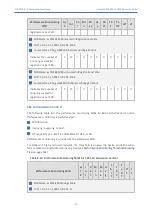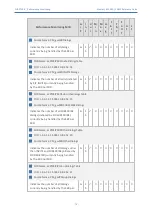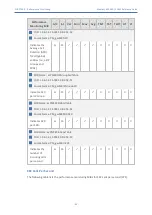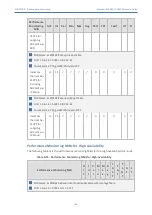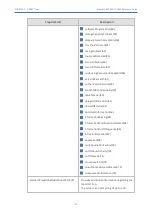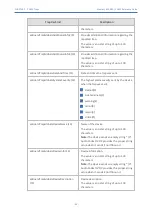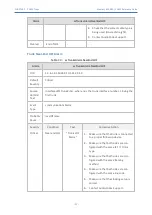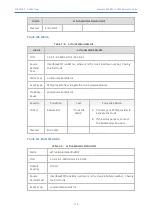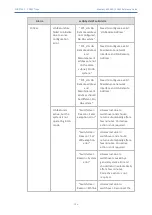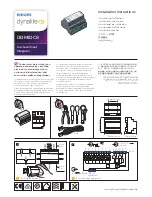
CHAPTER 7 SNMP Traps
Mediant 800 SBC | SNMP Reference Guide
7
SNMP Traps
This section describes the SNMP traps supported by the device.
Standard Traps
The device also supports the following standard traps:
■
authenticationFailure
■
coldStart: The device supports a cold start trap to indicate that the device is starting up.
This allows the OVOC to synchronize its view of the device's active alarms. In fact, two
different traps are sent at start-up:
●
Standard coldStart trap: iso(1).org(3).dod(6).internet(1). snmpV2(6). snmpModules(3).
snmpMIB(1). snmpMIBObjects(1). snmpTraps(5). coldStart(1) sent at system
initialization.
●
Enterprise acBoardEvBoardStarted: generated at the end of system initialization. This
is more of an "application-level" cold start sent after all the initializing process is over
and all the modules are ready
■
linkDown
■
linkup
■
entConfigChange
■
dsx1LineStatusChange (Applicable only to Digital Series)
Proprietary Traps
This section provides information on proprietary SNMP traps supported by the device. There is
a separation between traps that are alarms and traps that are not (i.e., logs). All traps have the
same
structure
made
up
of
the
same
16
varbinds
(Variable
Binding),
i.e.,
1.3.6.1.4.1.5003.9.10.1.21.1. For a list of the varbinds, see
The source varbind is composed of a string that details the device component from which the
trap is being sent (forwarded by the hierarchy in which it resides). For example, an alarm from
an SS7 link has the following string in its source varbind: acBoard#1/SS7#0/SS7Link#6. The SS7
link number is specified as 6 and is part of the only SS7 module in the device that is placed in
slot number 1 (in a chassis) and is the module to which this trap relates. For devices where
there are no chassis options, the slot number is always 1.
Full proprietary trap definitions and trap varbinds are found in AcBoard MIB and AcAlarm MIB.
All traps are sent from the SNMP port (default 161).
- 91 -


